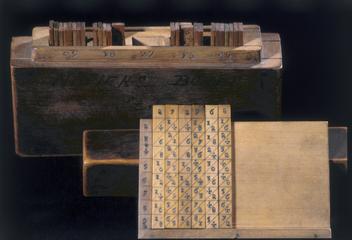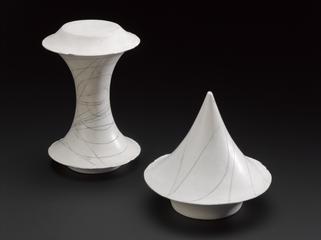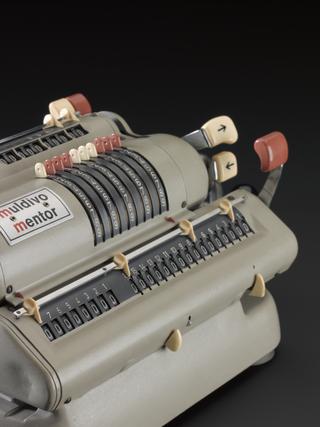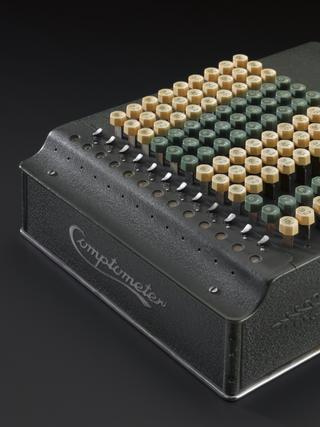
Chinese abacus
- Made:
- before 1863 in China










Chinese abacus, Suan Pan form
Chinese abacus. The Suan Pan is the oldest form of abacus still in use; numbers are set by moving beads up and down to touch the horizontal cross-bar. There are nine thin rods carried by a rectangular frame, which is divided into two unequal parts by a cross-bar separating the beads into two groups. On each rod there are five beads in the lower and larger department, and two beads in the smaller compartment. Taking any particular rod as the unit rod, the rods to the left represent tens, hundreds, and so on; those to the right being tenths, hundredths, and so on.
Details
- Category:
- Mathematics
- Object Number:
- 1863-20
- Materials:
- bamboo, paper (fibre product) and wood (unidentified)
- Measurements:
-
overall: 25 mm x 160 mm x 120 mm, .14 kg
- type:
- abacus
- credit:
- International Decimal Association




